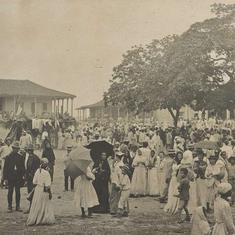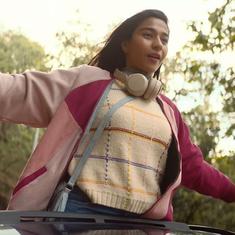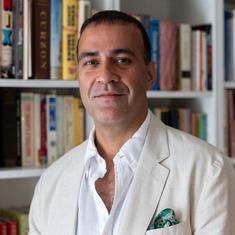Sometime in 2014, Vivian Fernandez aka Divine debuted the single Mere Gully Mein featuring Naved Shaikh aka Naezy at Blue Frog in Lower Parel, Mumbai. “Pure sheher ki awaaz mere gully mein, pray aarti ya namaaz mere gully mein (My city’s voice resonates in my lane, Hindu and Muslim prayers resonate in my lane),” Fernandez rapped, an ode to the neighbourhood where he grew up.
A few executives from Sony Music in the audience watched the performance with great interest. Impressed with the track, they offered to release it and the accompanying music video. “His lyrics and music cuts through geographies and appeals to all age groups,” said Rohan Jha of Sony Music India.
And just like that, Fernandez who had been writing and performing songs for eight-nine years and grew up in the slums of JP Nagar in Andheri finally had a recording contract. And a career in music.
Fernandez’s story is hardly unique now.
In May, Tej Brar, head of talent at Only Much Louder or OML, a new media enterprise, declared that 2016 was the “year of desi hip-hop”. OML, admittedly, manages Naezy, a popular rapper from the Mumbai suburb of Kurla. Still, there may be an element of truth in his claim.
In India, multiple hip-hop movements are growing parallelly. There is the extremely popular Punjabi incarnation which has found its way into the Hindi film industry via Honey Singh and Badshah.
Then, there is Borkung Hrangkhawl aka BK from Tripura, styled as the first rapper from the Northeast, MC Kash from Kashmir, Brodha V from Bengaluru (who was signed on by Sony Music in 2013 but parted ways in 2015), a Telugu hip-hop scene in Hyderabad, MC Mawali who raps exclusively in Marathi, right-wing rapper MC Tod Fod, and Mumbai’s Dee MC whose lyrics explore gender inequality.
These names do not even begin to cover the burgeoning hip-hop movement across India.
Nevertheless, much of the focus rests on Mumbai, and more specifically Dharavi. Hip Hop Homeland, a series of documentary shorts by the website 101India, focused on Mumbai, which Fernandez estimates has around 500 rappers. In the works is Hindi filmmaker Zoya Akhtar’s Gully Boy, a coming-of-age story about rappers in Mumbai’s slums that is rumoured to star Ranveer Singh.
Some years ago, The Guardian devoted a few articles and a short documentary on the hip-hop scene in Dharavi, a neighbourhood popularised by the 2009 award-winning film Slumdog Millionaire as “Asia’s largest slum”, even though that title has long been captured by Orangi settlement in Karachi.
“There are four to five rapping groups in Dharavi,” said Tony Sebastian, one of the oldest rappers from the neighbourhood. These groups do not include b-boying and graffiti artists and deejays in the area. Sebastian, who is part of Dopeadelicz, has a deal with Qyuki, a social media platform launched by the film-maker Shekhar Kapur and music composer AR Rahman.
Behind the fascination with Dharavi may be a romantic view. Hindi films have popularised the idea that it is only in the “city of dreams” where a rags-to-riches story is possible. Besides, the hip-hop movement in Mumbai’s slums is often compared to the political movement in the 1990s in the US when socially-conscious rappers spoke about the frustrations of an inner-city life.
Sebastian summarised this idea when interviewed in the documentary Dharavi Hustle, “People who live in Dharavi are keeping it real. In hip hop, in real life.”
When Divine uploaded his first few songs on YouTube in 2008, hardly anyone listened. The most hits any of them got was around 1,500, a minuscule figure by the video sharing site’s standards. Today, his videos command upwards of 5-6 lakh views. Jungli Sher, his recent release, has 13 lakh views.
What changed?
Sometime in the mid-2000s, Mumbai rappers began meeting on Orkut communities, Google’s now-defunct social networking site. They were young, in their mid-to-late teens, and loved hip-hop. They carried on rap battles through text. In 2006, out of these sprung Mumbai’s Finest, which founding member Abhishek aka Ace describes as one of the first hip-hop crews in the city. Two of its members, including Divine, would go on to get record deals with Sony Music.
“We shared information about hip-hop on these communities,” remembered Sejal Kapoor, a music producer based in Delhi who has worked with Divine and Naezy. “We would make up rhymes and give tips on how to become better.”
While rappers from India were slowly building a movement, the hip-hop scene became influential across the globe. In 2015, Spotify claimed that hip-hop was the most listened genre in the world. This growth has reflected in India, too. Rap and hip-hop are frequently included in party songs in popular films. Baba Sehgal, who is often referred to as India’s first rapper, is back in the limelight.
Since most of India’s rap artists were influenced by artists like Tupac, 50 Cent and Eminem, they first began writing songs in English. These songs were not very popular outside of the niche audience in the hip-hop community. Fernandez recalls having to Google words that would express what he wanted to talk about.
Speaking about the lack of success that the early bands scene had, Sebastian explained, “The first bands in the area performed gangsta rap. It was all clubs, bitches and guns. It felt fake. I know for sure those guys had never been to a club.”
Around four to five years ago Divine began rapping in Hindi. Sebastian, who too was rapping in English, released a single called Aai Shapat (Mi Nvahto) (I swear on my mother, it wasn’t me), in Marathi. What both of them realised was that it was singing in regional languages that gave them the most responses. And it also became easier to express their feelings on the issues they wanted to talk about.
“I realised that hip-hop artists in America’s ghettos rapped in slang,” Fernandez said. “That’s why I made the switch and I could write the lyrics much more easily.”
Why are they drawn to hip-hop? There is very little investment, says Sebastian, who performed on Coke Studio with Ram Sampath last year. Sample beats can be downloaded from the internet. What you need is ability and material to make powerful music, Sebastian adds. The 25-year-old also attempted to explain the popularity of the city’s scene, “In Mumbai, we have multiple languages. I rap in Hindi, English, Tamil and Marathi. That brings the colour.”










